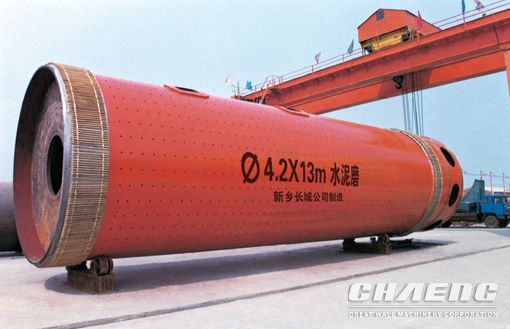Industry Reports
Chaeng---Ball grinding mill Closed-circuit systems
The efficiency of the early stages of grinding in a ball mill is much greater than that for formation of ultra-fine particles, so ball mills operate most efficiently by making a coarse product, the fine fractions of this then being separated, and the coarse part being returned to the mill inlet. The proportion of the mill-exit material returned to the inlet may vary from 10-30% when ordinary cement is being ground, to 85-95% for extremely fine cement products. It is important for system efficiency that the minimum amount of material of finished-product fineness is returned to the inlet. Modern separators are capable of making a very precise size "cut" and contribute significantly to the reduction of energy consumption, and have the additional advantage that they cool both the product and the returned material, thus minimizing overheating.

Efficient closed-circuit systems, because of their tight particle size control, lead to cements with relatively narrow particle size distributions (i.e. for a given mean particle size, they have fewer large and small particles). This is of advantage in that it maximizes the strength-production potential the clinker, because large particles are inert. As a rule of thumb, only the outer 7 μm "skin" of each particle hydrates in concrete, so any particle over 14 μm diameter always leaves an un-reacted core. However, the lack of ultra-fine particles can be a disadvantage. These particles normally pack the spaces between the larger particles in a cement paste, and if absent the deficit is made up with extra water, leading to lower strength. This can be remedied by including 5% calcium carbonate in the cement: this soft mineral produces adequate ultra-fines on the first pass through the mill.



